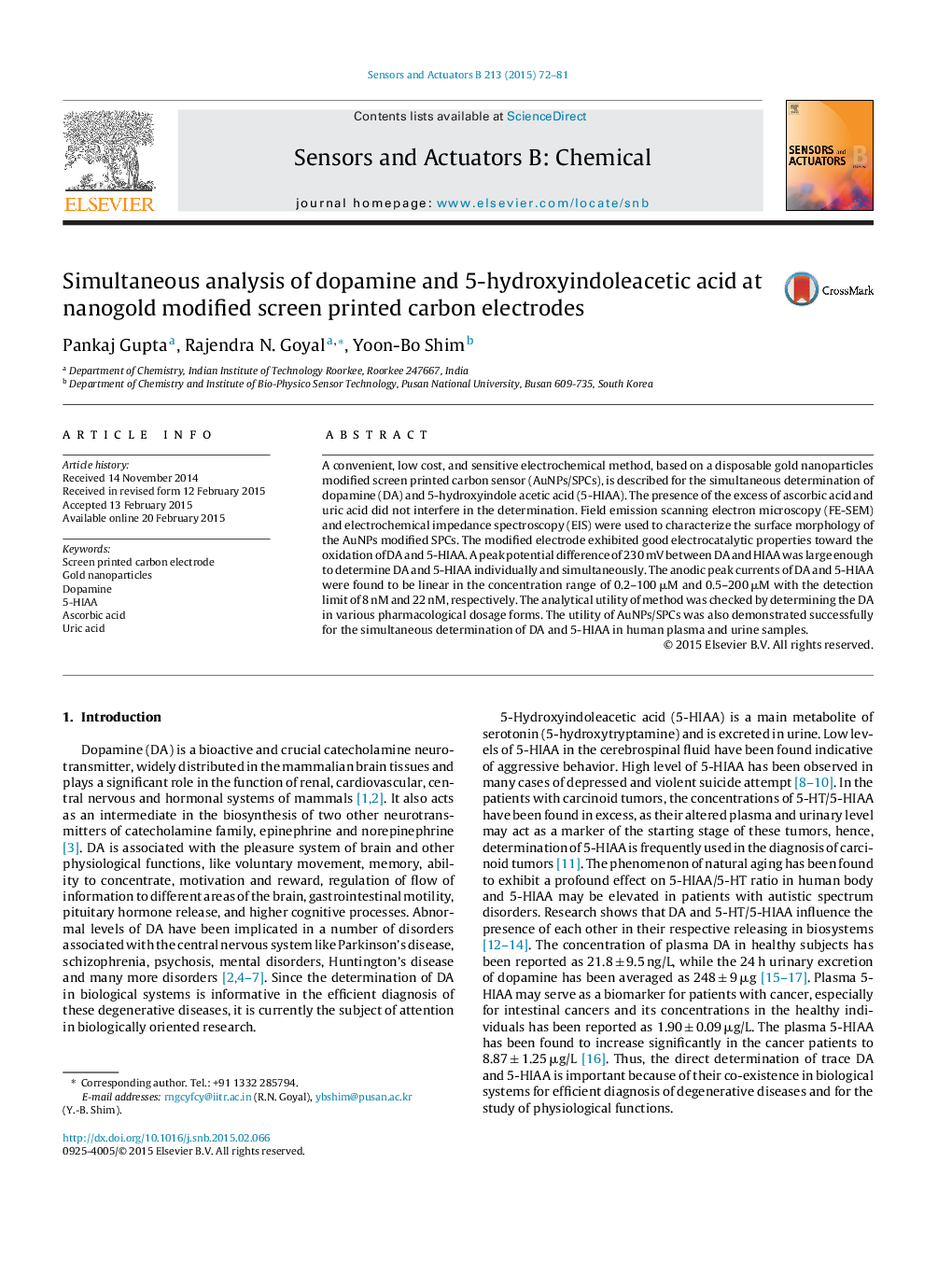| Article ID | Journal | Published Year | Pages | File Type |
|---|---|---|---|---|
| 750650 | Sensors and Actuators B: Chemical | 2015 | 10 Pages |
•A nanogold modified screen printed carbon sensor is used for the determination of dopamine and 5-hydroxyindole acetic acid.•The modification was confirmed by FE-SEM and impedance studies.•The peak separation between the two compounds was 230 mV.•Low detection limit of 8 nM and 22 nM was observed for DA and 5-HIAA.•Ascorbic acid and uric acid do not interfere in the determination.
A convenient, low cost, and sensitive electrochemical method, based on a disposable gold nanoparticles modified screen printed carbon sensor (AuNPs/SPCs), is described for the simultaneous determination of dopamine (DA) and 5-hydroxyindole acetic acid (5-HIAA). The presence of the excess of ascorbic acid and uric acid did not interfere in the determination. Field emission scanning electron microscopy (FE-SEM) and electrochemical impedance spectroscopy (EIS) were used to characterize the surface morphology of the AuNPs modified SPCs. The modified electrode exhibited good electrocatalytic properties toward the oxidation of DA and 5-HIAA. A peak potential difference of 230 mV between DA and HIAA was large enough to determine DA and 5-HIAA individually and simultaneously. The anodic peak currents of DA and 5-HIAA were found to be linear in the concentration range of 0.2–100 μM and 0.5–200 μM with the detection limit of 8 nM and 22 nM, respectively. The analytical utility of method was checked by determining the DA in various pharmacological dosage forms. The utility of AuNPs/SPCs was also demonstrated successfully for the simultaneous determination of DA and 5-HIAA in human plasma and urine samples.
Graphical abstractSimultaneous determination of DA and 5-HIAA has been carried out at nanogold modified screen printed electrode.Figure optionsDownload full-size imageDownload as PowerPoint slide
